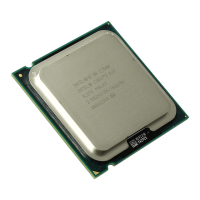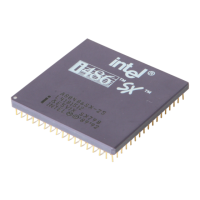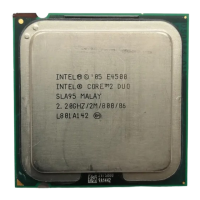Intel
®
Core
TM
2 Duo E6400, E4300, and Intel
®
Pentium
®
Dual-Core E2160 Processor—Intel®
Quiet System Technology (Intel® QST)
Intel
®
Core
TM
2 Duo E6400, E4300, and Intel
®
Pentium
®
Dual-Core E2160 Processor
TDG October 2007
40 Order Number:315279 -003US
For a PID algorithm to work limit temperatures are assigned for each temperature
sensor. For Intel QST, the T
CONTROL
for the processor and chipset are to be used as the
limit temperature. The ME will measure the error, slope and rate of change using the
equations below:
• Proportional Error (P) = TLIMIT - TACTUAL
• Integral (I) = Time averaged error
• Derivative (D) = ΔTemp / ΔTime
Three gain values are used to control response of algorithm:
• Kp = proportional gain
• Ki = Integral gain
• Kd = derivative gain
The Intel® Quiet System Technology (Intel® QST) Configuration and Tuning Manual
provides initial values for the each of the gain constants. In addition it provides a
methodology to tune these gain values based on system response. Finally the fan
speed change will be calculated using the following formula:
ΔPWM = -P*(Kp) - I*(Ki) + D*(Kd)
Figure 14. PID Controller Fundamentals
Proportional
Error
Derivative (Slope)
Integral (time averaged)
Proportional
Error
Derivative (Slope)
Integral (time averaged)
Proportional
Error
Derivative (Slope)
Integral (time averaged)
Proportional
Error
Derivative (Slope)
Integral (time averaged)
RPM Temperature
Time
+ dPWM
+ dPWM
+ dPWM
+ dPWM
+ dPWM
+ dPWM
-
-
dPWM
dPWM
-
-
dPWM
dPWM
-
-
dPWM
dPWM
Actual
Temperature
Actual
Temperature
Fan
Speed
Fan
Speed
Limit
Temperature
Limit
Temperature

